Table of Contents
ToggleIntroduction
In the heart of Rome’s Piazza Colonna, the Column of Marcus Aurelius and Faustina stands as a lasting tribute to the legacy of Emperor Marcus Aurelius and his wife, Faustina. Erected around 180 CE and likely commissioned by Emperor Commodus to honor his parents, this towering column captures the spirit of Roman architecture and imperial pride. Modeled after Trajan’s Column, which was constructed in 113 CE, the monument celebrates Marcus Aurelius’ military victories and philosophical rule, preserving his legacy in a form that has withstood the test of time.
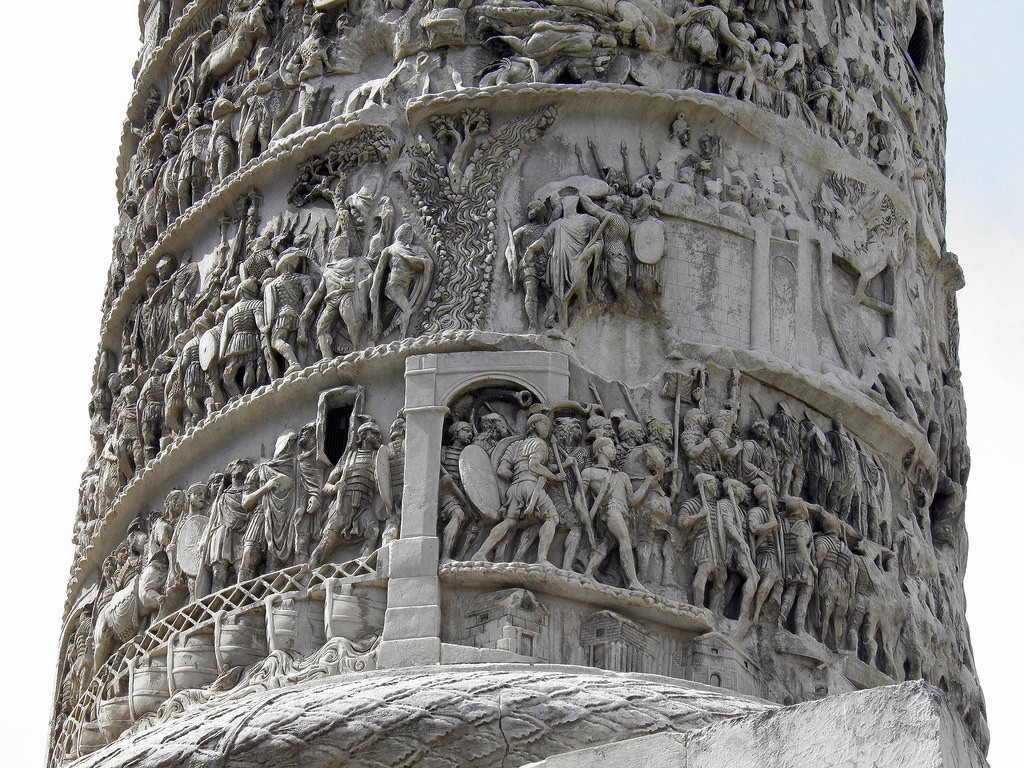
Historical Background and Significance
A Monumental Dedication to Marcus Aurelius
The column was built as a tribute to Marcus Aurelius’ military campaigns against the Quadi along the Danube River between 172 and 175 CE. This period was marked by Rome’s expansionist ambitions and frequent battles, which Marcus Aurelius undertook as both a ruler and a Stoic philosopher. The monument was intended to immortalize his victories and embody the virtues of discipline and justice he upheld, reflecting his deep philosophical leanings alongside his military prowess.
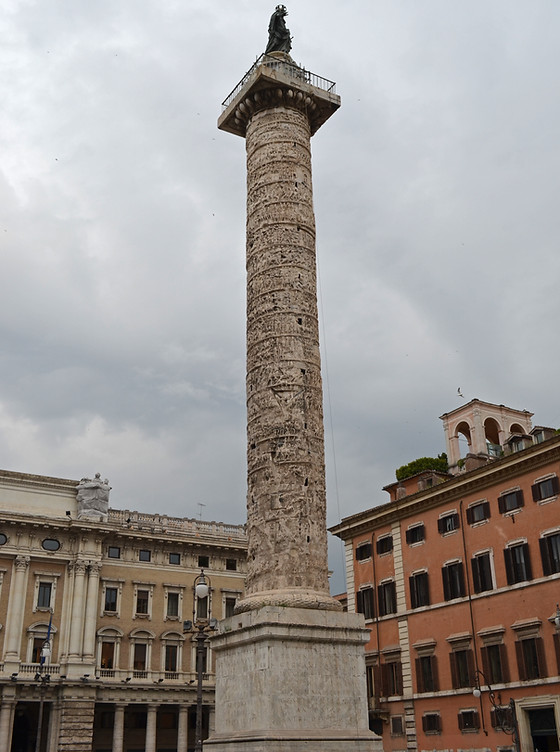
Influence of Trajan’s Column
Inspired by Trajan’s Column, an earlier monument celebrating Emperor Trajan’s conquests in Dacia, the Column of Marcus Aurelius followed a similar design, with intricate reliefs spiraling up its shaft. While Trajan’s Column set the precedent, the Marcus Aurelius Column focused on a different message—celebrating not only martial success but also the emperor’s unique brand of leadership and clemency, traits that distinguished Marcus Aurelius in the Roman imperial lineage.
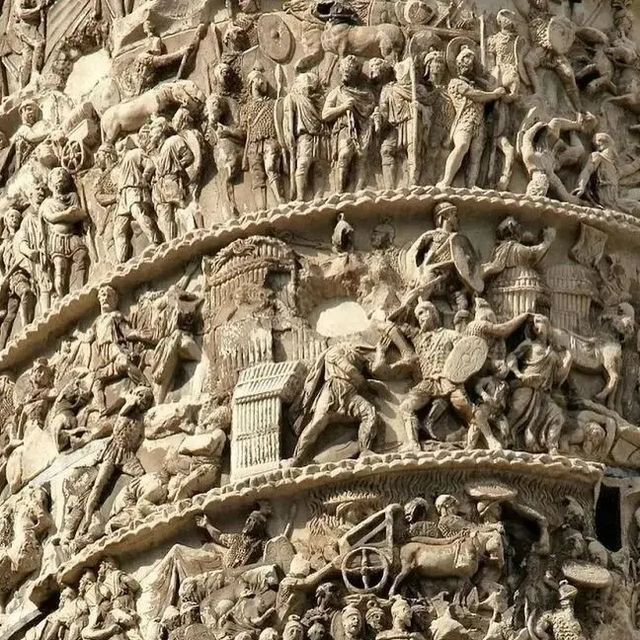
Architectural Marvel and Structural Details
Imposing Height and Engineering Precision
Rising 39 meters above ground and extending an additional 7 meters underground, the column originally reached a total height of 51.95 meters. A statue, likely of Marcus Aurelius, once adorned the top, symbolizing the emperor’s elevated status. Crafted entirely from marble, the column’s base is meticulously carved, highlighting the engineering ingenuity of ancient Rome.
Inside, a hollow core features a spiral staircase that once provided access to a viewing platform at the top. This feature showcases Roman architectural skill, as the staircase required precise balance to support the weight of the column and provide safe passage upward. Although the interior is now closed to the public, the column’s structural integrity after nearly two millennia remains a testament to Roman engineering.
Narrative Reliefs: A Story in Stone
The most captivating aspect of the Column of Marcus Aurelius lies in its intricate reliefs, which spiral up the structure and tell the story of the emperor’s military campaigns. These reliefs depict scenes of battle, but they also show acts of mercy, diplomacy, and cultural exchanges with the Quadi tribes. This emphasis on both victory and benevolence reflects Marcus Aurelius’ Stoic philosophy, marking him as a ruler who believed in justice as well as strength.
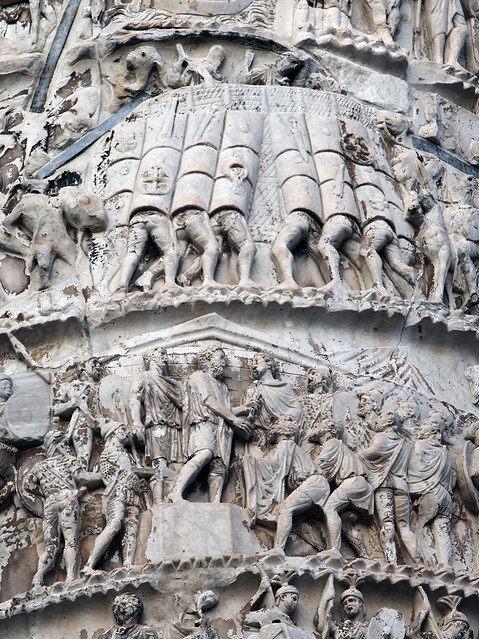
The reliefs vividly illustrate the harshness of the battles along the Danube, from hostile landscapes to the hardships faced by Roman soldiers. Yet interwoven in these scenes are moments of clemency, where the emperor is shown sparing captured tribes, reinforcing his legacy as a compassionate leader.
Symbolism and Legacy
A Potential Temple and the Deification of Marcus Aurelius
Some historians suggest that a temple dedicated to the deified Marcus Aurelius and Faustina may have once stood nearby, completing this grand tribute. Such a structure would have underscored the emperor’s reverence among his subjects and his official deification following his death. The addition of a temple would also reflect the ancient Roman practice of honoring emperors who were considered semi-divine, reinforcing the idea of Marcus Aurelius as a ruler who transcended his time.
The Column’s Enduring Symbolism
The Column of Marcus Aurelius and Faustina remains more than just a relic; it is a symbol of the emperor’s unique leadership, blending philosophical wisdom with martial strength. Marcus Aurelius’ reign was marked not only by military successes but also by his writings on Stoicism and his contemplative approach to governance. The column stands as a tribute to this complex legacy, connecting modern viewers with a ruler who valued both conquest and compassion.
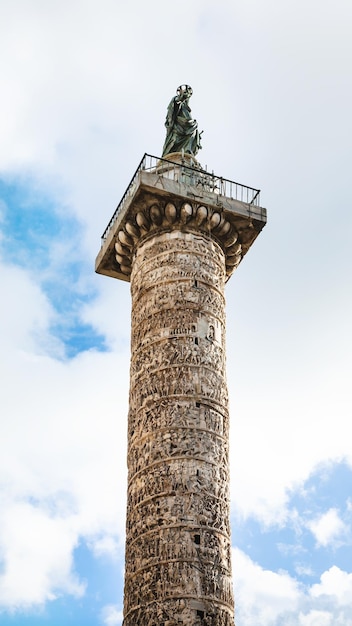
Conclusion
Today, the Column of Marcus Aurelius and Faustina continues to captivate visitors, embodying the grandeur of Roman engineering and the philosophical values of its celebrated emperor. As one of Rome’s architectural masterpieces, it serves as a timeless testament to an era of imperial power and intellectual depth. The column’s intricate design and historical significance make it a lasting symbol of reverence, a connection to Rome’s cultural heritage, and a reminder of the enduring legacy of Marcus Aurelius.

